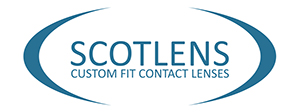Module 5 of 6
REVIEW APPOINTMENTS
Learning Outcomes
After completing this module you should:
- Understand what examinations to perform at review appointments
- Be able to identify topography patterns
- Be able to perform a corneal examination with slit lamp
REVIEW SCHEDULE
An examination on Day 1 ensures the lens is safe for prolonged wear. Because it can take 14 days to achieve full correction the results on Day 1 are expected to be partial results. The following procedures are performed on Day 1 and every following review:
Lenses should be removed by the patient on waking.
At every review perform:
- Check visions, Rx and VAs
- Slit lamp examination of cornea
- Topography subtractive assessment
- Discuss how the vision was on waking
- On Day 1 – schedule a 2-week morning review
- Reviews after this are recommended at 1 month, then six monthly or annually
- Lenses are certified for use for 12 months from dispense
VISUAL ACUITY REVIEW
After 14 days from starting wear, or after 1 week with an altered lens, the vision will have achieved the full correction.
- Measure binocular vision distance and near
- Discuss the vision with the patient and establish if they are 20/happy
- If their vision is unsatisfactory establish when and why
- Measure spherical refraction and VAs R&L.
- This is the power alteration that can be incorporated into a new lens
- Measure the sphero-cyl refraction and VAs R&L
- It is common for the cyl to match the baseline spectacle Rx. This will not be able to be incorporated into a new lens.
- Consider the findings against the treatment zone appearance on topography using the axial and tangential subtractive maps
TOPOGRAPHY REVIEW
Topography will give detailed information on the power changes on the cornea, and the lens fit behind the closed eyelid. This information is used in conjunction with the visual and slit lamp assessments.
TREATMENT ZONE (TZ) ASSESSMENT
Assess the TZ by creating a subtractive map with the baseline and the map from the review.
- Axial Power shows the refractive qualities of the TZ. Including power, size and position.
- Tangential shows detailed shape change, illustrating the lens fit behind the closed eyelid
- An optimum TZ will
- show a maximum power similar to the target myopia
- have regular contours with the darkest area central
- form where indicated by the baseline colour skew

TREATMENT ZONE POWER ASSESSMENT (AXIAL)
The VAs and refraction will let us know some information about the power of the TZ. TZ power will probably match the Rx change, especially when the TZ is bullseye.
- The dotted white line shows the TZ
- It is bullseye on the visual axis
- The power contours are round and regular giving a power correction of -2.62D.
- The power change in the 5mm pupil is 2.2D, the myopic defocus dose MDD. This can be though of as the ADD power. Higher values are desirable in myopia control, lower for less aberrations.

TREATMENT ZONE POSITION
A bullseye TZ will be on or near the visual axis. Baseline contour skew reliably indicates where the TZ will form. If the TZ position matches the baseline skew the fit of the lens is optimum. This TZ decentration is expected and different to the lens decentration examples that will be explained later.
EXPECTED TZ DECENTRATION
- The baseline colour contours skew to the temporal side (orange dotted circle). The alignment zone of the lens will match these corneal curves
- This TZ has formed temporally as expected
- The lens fits the cornea well. Altering the alignment won’t make the lens fit more nasal on the cornea
- This can be noted on records as ‘TZ temporal-bullseye’

These examples show expected TZ decentration based on baseline skew.
Usually expected TZ decentration does not impact on the quality of the vision and patients will be 20/happy.
If the vision is affected:
1. Incorporate any SE that improves VA in a replacement lens
2.Increase the optic diameter if a smaller diameter is fitted.
3.If patient is fully corrected and glare is the issue, reduce the apical tear thickness 10um and change lens power +0.50D
4.Provide residual astigmatic correction in over-specs for wear as needed

POOR LENS FIT
Unexpected lens decentration is uncommon due to the accuracy of topography based fitting. Poor lens fit usually results in unexpected lens decentration. Decentration may also be caused by lids interaction.
Poor fit can result in:
- TZ decentration
- Partial correction
- Induced astigmatism usually increased or at a different axis to baseline Rx
- Poor quality VA
- Abnormal topography patterns
- Corneal staining
- Lens binding
The topography patterns below can indicate the reason when a lens fits poorly.
POOR LENS FIT TOPOGRAPHY PATTERNS

SLIT LAMP EXAMINATION
Slit lamp examination should be performed at every review. The lens does not generally need to be assessed on the eye. The topography shows the lens fit behind the closed lid. Checking the cornea to ensure it is healthy confirms a suitable fit.

SUMMARY
- Visions, refraction, VAs, topography and slit lamp exam should be performed at every review.
- SE refractions can be incorporated in new lenses
- A bullseye, or near bullseye because of baseline skew, is an optimum fit
- It is recommended to make any lens adjustments after 2 weeks of wear as patients will not have achieved full correction before this time
- Lenses are certified for 12 months use once fit is approved by fitter
